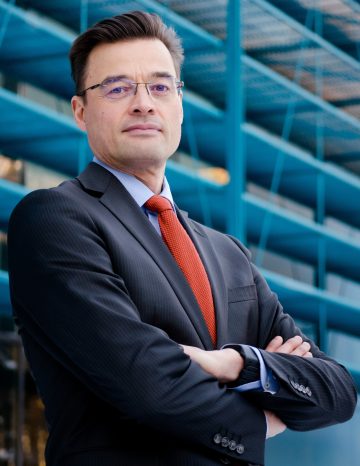Constraints of innovations in the Finnish construction industry

Harri Haapasalo
Professor, Head of Research Unit
Industrial Engineering and Management, University of Oulu
Finland
harri.haapasalo@oulu.fi
The construction industry has been rather conservative in terms of innovations, business management and productivity. Naturally, economic performance analysis must be in line with industry standards. In the last five decades, the planning, design and construction processes have shown few improvements in the productivity curve in the context of the global as well as Finnish construction industry. Productivity measures output related to input. Any improvement in output is negated by cost development, resulting in a horizontal or even negative plane in the productivity curve.
One of the major barriers to innovation in the construction industry is cost-based pricing. A project-based business is often blamed for resulting cost-based pricing, which hinders the emergence of innovations. However, several industries operating in a project mode have successfully utilized value-based pricing; therefore, being a project-based business is not a problem. Cost-based pricing seldom enables investment in innovation and development. According to recent studies, companies in the construction business rarely use an intentional business model under which they either analyse, bid or choose to participate in certain types of projects. The lack of business models naturally separates projects from each other and does not enable the repetition or benefits of scales. Individual projects drive the business processes in construction, not the other way around. Individual projects, together with project-based pricing, result in a construction business following a type of prototype production and business mode in which productivity or business development is hard to ensure, irrespective of how innovative people are.
Several discussions and efforts have emphasised and enhanced innovation in different industries. There are different theories and schools of thought in favour of systematism and/or creativity. Creativity is a natural prerequisite for innovation. However, one needs to be systematic to be sustainably creative to introduce innovations in an organization. Naturally, there are some great inventions that are exceptions to this rule. In practice, this means that companies in certain businesses need to have processes that enable some level of systematism, scale of benefits and repetition. In the 1950s, Toyota noted that “decreasing variation is the source of efficiency,” which cannot be achieved without defined processes. Any known quality management or excellence evaluation criteria will verify this.
Products and processes should be the focal points for continuous improvement and innovation. You need to know what, why and how to improve. In an organizational sense, the business model description should include the definition of a product (tangible, intangible or a mix of these), requiring the product development process to define the product or an offering that delivers value to customers (the entire order-delivery process) and results in revenue. The product (in construction, it is naturally configurable) is the item defining the cost. It needs to be unambiguous to enable efficient processes that accumulate costs with minimum variation. Rational innovations should focus on the critical elements of a business model such as offering, value creation system and revenue logic.
Another factor resulting in poor productivity is the traditional contract model in the construction industry. In practice, these models limit the role of suppliers to delivering what is ordered, with no room for modification. This shifts the emphasis to the order, not delivery or collaboration. In the case of orders that are expensive and take time to deliver, the supplier should focus on ”what is needed” instead of ”what is requested”. Supplier should be the expert of a delivery. A collaborative contract model enables this, and the early evidence indicates an optimistic output in terms of cost, quality and time.
Finland is a promised land for many new things. Generally, Finland is known as a development-oriented country led by technology leaders such as Nokia. We need to learn to apply the best practices for each industry. In the construction sector, novel collaborative contract models have gained extensive attention in the context of large and complex projects, where Finland has become the forerunner by applying collaborative contract models, resulting in a conducive environment for innovation. There are also several examples of the introduction of new technology in the construction sector, especially in the case of construction products. However, the construction industry requires structural changes and renovations to significantly increase productivity through innovations in construction.
Expert article 3322
>Back to Baltic Rim Economies 5/2022
To receive the Baltic Rim Economies review free of charge, you may register to the mailing list.
The review is published 4-6 times a year.
